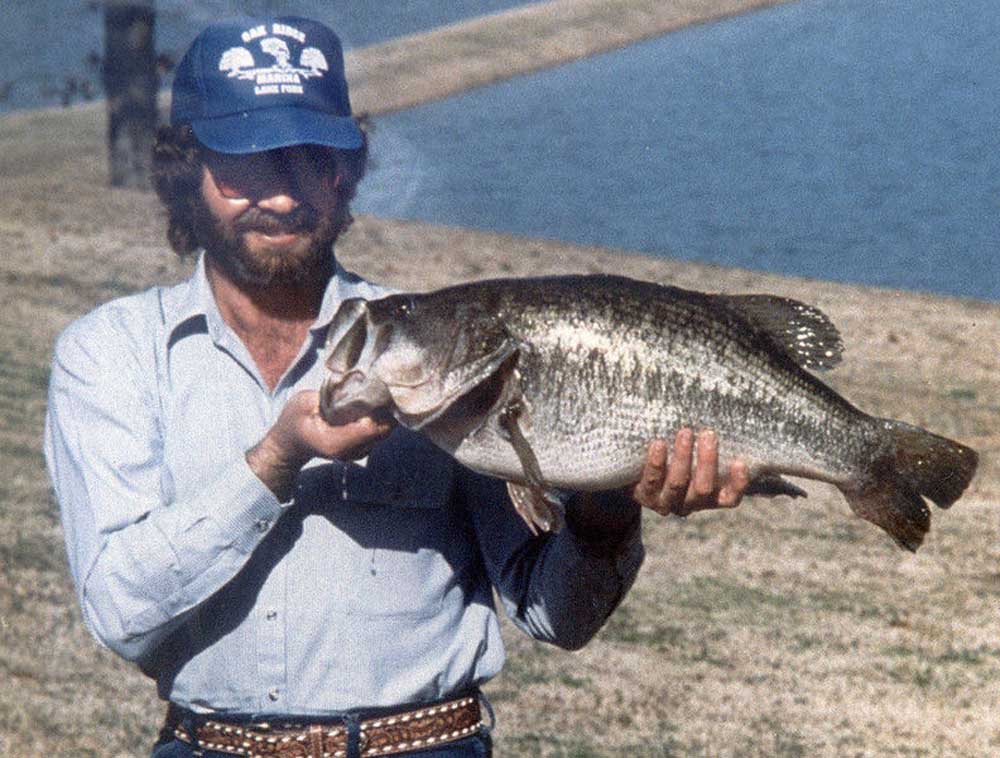Texas’ bass record is 24 years old and counting
Published 8:45 am Sunday, March 13, 2016

- TPWD/COURTESY THERE HAS BEEN NO challenge to Texas’ state record bass since it was caught in 1992. Older lakes, other challenges is a major reason, according to Texas Parks and Wildlife Department.
STEVE KNIGHT/outdoor@tylerpaper.com
Let’s face it, the fact Texas has an 18.18-pound state record bass has as much to do with luck as anything.
Trending
First, if the Texas Parks and Wildlife Department had not brought Florida bass into the state in 1972 the state record might be a lot closer to 10 pounds than 20.
Secondly, even with Florida bass had the Sabine River Authority not done everything it did to create a great bass fishery as it did a water supply reservoir the state record could easily be Earl Crawford’s 16-9 caught on Lake Pinkston in 1986.
Finally, had Barry St. Clair and some friends not gone crappie fishing at Lake Fork on Jan. 24, 1992, the record would revert back to Mark Stevenson’s Ethel, a 17.67-pound Fork bass caught in 1986.
Oh yeah, there is also that little fact that monster bass are as rare as hen’s teeth. Being at the right place at the right time to catch one is, well, just lucky.
It has been a long, dry spell since St. Clair’s catch. The largest bass recorded since that time on public waters was a 16.89 caught on Lake Fork in 1993. There have been other 16-pounders caught since as well, but no lake has shown a real challenge to the state record or even the run of 17-pounders that were caught in the two decades starting in the 1980s.
So the question is has Texas bass fishing run its course when it comes to super-sized fish? Will St. Clair’s record stand for 37 years like H.R. McGee’s 13.5 from Medina Lake did until Jimmy Kimbell came along in 1980 with the first modern-day record, a 14.09 that still stands as Lake Monticello’s lake record?
Trending
Optimism lives eternally for fishermen and fisheries biologists, and while the odds seem stacked against a new state record anytime soon, TPWD Fisheries Division Director Craig Bonds is not so quick to give in.
“I hope not. We try to continue to provide a better product for our anglers at a time when the functional age of our reservoirs is getting older and older,” Bond said.
And therein lies what may be the greatest obstacle facing a new record, reservoir age.
With only a few exceptions of smaller reservoirs or ones built in less than ideal locations, there hasn’t been a new lake built in Texas in decades. Still considered one of Texas’ newest lakes, Lake Fork is 36 years old. Toledo Bend is 49 and Sam Rayburn is 51. Falcon is 62, O.H. Ivie is 26 and Alan Henry is 23. Lake Austin is 77. That is the cream of the crop when it comes to Toyota ShareLunker providers in the state.
“In Texas we are past the peak of reservoir construction. That is an issue we can’t regulate with length limits or stock our way out of,” Bonds said.
However, he notes not every lake ages the same way. Fork was built in an area where the soil is very fertile, helping it to maintain a more-youthful-than-its-age fishery. Neither Toledo Bend nor Rayburn have a lot of development along their shoreline and thus have maintained a younger functional age than other lakes because they remain full of vegetation and timber.
To the other degree Falcon and Amistad have been severely limited by fluctuating water levels. Hot summer water temperatures that can actually cause bass to lose weight can also impact quality on the lakes. Ivie and Alan Henry are also located in arid portions of the state, although they seem to refill more regularly. In those cases their trophy fisheries can be directly related to restocking efforts after those drawdown occurrences.
Bonds said that looking back, the initial stocking of farm ponds within the footprint of what became Lake Fork and the early generations of fish they provided is what the lake’s reputation was built on. Using the ShareLunker program as a measuring stick, 178 of the lake’s reported 257 bass 13 pounds and larger came in the first 18 years of the lake’s existence.
“Most of Lake Fork’s ShareLunkers were produced in the new lake boom following impoundment. Ten to 15 years is considered the boom period. It is after fish are initially stocked and they don’t have other cohorts to compete with,” Bonds said.
Bonds said based on size, Stevenson’s Ethel was probably one of the brood fish stocked before impoundment while St. Clair’s was possibly a fingerling stocked after impoundment.
So without any new reservoirs under construction, how does the department invigorate big fish fishing again? Bonds said it will require work to recreate habitat in reservoirs around the state and breeding genetics.
Habitat is coming in the form of reintroducing native vegetation back into reservoirs. It is a slow process, but the only viable one for a long-term solution.
The breeding genetics could take even longer. Department biologists continue to attempt to develop a faster and larger growing fish through its Operation World Record program using ShareLunker entries. Early efforts have shown some success, but studies continues and if and when those are successful the program will have to be introduced into the TPWD’s hatchery program.
“We have a goal to provide the best quality fishing we can. If 8 to 16 pounds is the best we can do, we are going to provide quality fish,” Bonds said.
Setting a new record anytime soon is going to take luck, but it always has.
Have a comment or opinion on this story? Contact outdoor writer Steve Knight by email at outdoor@tylerpaper.com. Follow Steve Knight on Facebook at Texas All Outdoors and on Twitter @txalloutdoors






